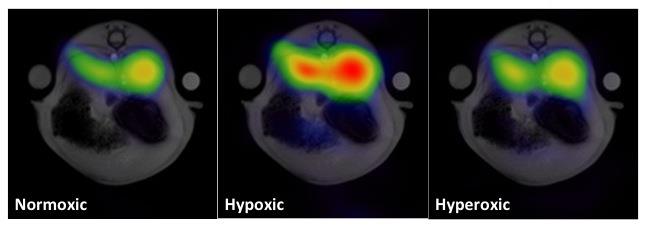Researchers make the invisible visible
As the first in the world, researchers from Aarhus have shown that a new scanning technique can see changes in metabolism that have until now remained invisible, while they are taking place.

The 2003 development of the so-called hyperpolarization technique by a Danish research was a groundbreaking moment that made it possible to see all the body’s cells with the help of a new contrast agent for MRI scans. Researchers from Aarhus have now taken another big step towards understanding the body’s cells and with it also the development of diseases:
“With the hyperpolarization method, sensitivity to specific contrast agents is up to 10,000 times higher than with a traditional MRI scanning. What we have now documented is that with the hyperpolarization MRI scanning we can not only see the differences in the metabolic patterns between healthy and ill, but we now can also see the metabolic changes as a consequence of acute influences while they are taking place in the diabetic kidneys. It is really groundbreaking,” says Assistant Professor Christoffer Laustsen from Aarhus University.
The discovery stems from a study of the correlation between oxygen level and the development of kidney disease in rats with and without diabetes. The findings have just been published in the prestigious international journalKidney International.
Tailored treatment
Though the advanced hyperpolarization technique has initially been utilised to document metabolic changes in the kidneys, it will be possible to use it to gain a greater insight into the development of diseases in all of the body’s organs:
“With this method we will have a fingerprint of the cells and we will be able to follow whether these fingerprints change over time, regardless of which organs we examine. We will, for example, be able to see whether complications related to diabetes and cardiovascular diseases are emerging, or how a cancer tumour develops,” says Christoffer Laustsen and continues:
“And with greater knowledge of what is always going on at the cellular level we will be able to make a diagnosis earlier than we can today, and we will also be able to tailor treatment to the individual patient to a greater extent.”
Better diagnosis of childhood diseases
The advantage of hyperpolarization scanning is not only that it provides the researchers with much greater detail about what is going on in the body. The new method can also prove to be very important for the smallest patients in particular:
“Another great advantage of this method is that this is quite harmless. The contrast agent for the hyperpolarization scanning is sugar-based, so there is no risk of the body tissues being exposed to radiation. It will therefore be possible to scan children more often than today,” says Christoffer Laustsen.
He has carried out the study with fellow researchers from Aarhus University, Aarhus University Hospital, the Technical University of Denmark, Hvidovre Hospital and Uppsala University.
The studies of metabolic changes at the cellular level have so far been carried out on rats. Christoffer Laustsen however expects that researchers in Denmark - which is one of the leading countries in Europe in the area - will be ready to offer diagnostic examination of patients within 2-3 years.
Read more
The original article can be read on Nature’s website.
Further information
Assistant Professor Christoffer Laustsen
Aarhus University, Department of Clinical Medicine, The MR Research Centre
Direct tel.: + 45 7845 6106
cl@mr.au.dk